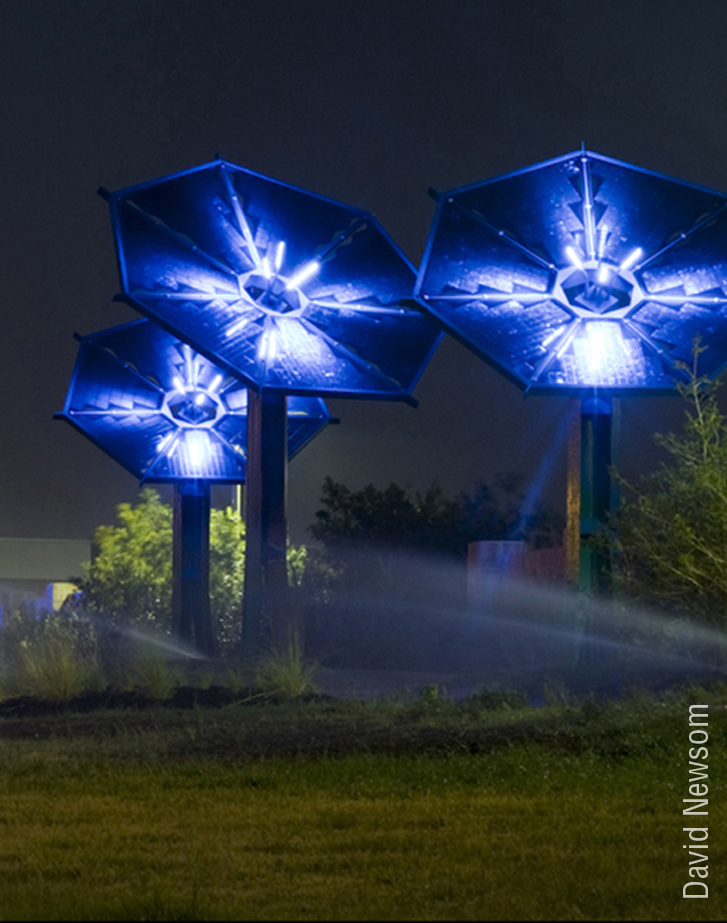Photographer Fabrice Monteiro set out to raise environmental awareness in Senegal – and created The Prophecy, a series of images that resonate across the globe.
Stunned by the environmental devastation he witnessed upon returning to his native West Africa after 20 years abroad, Monteiro saw that well-meaning environmental instructions – “do this” or “don’t do that” – weren’t working. So he turned to local culture – specifically West Africa’s belief in spirits – for a more impactful message.
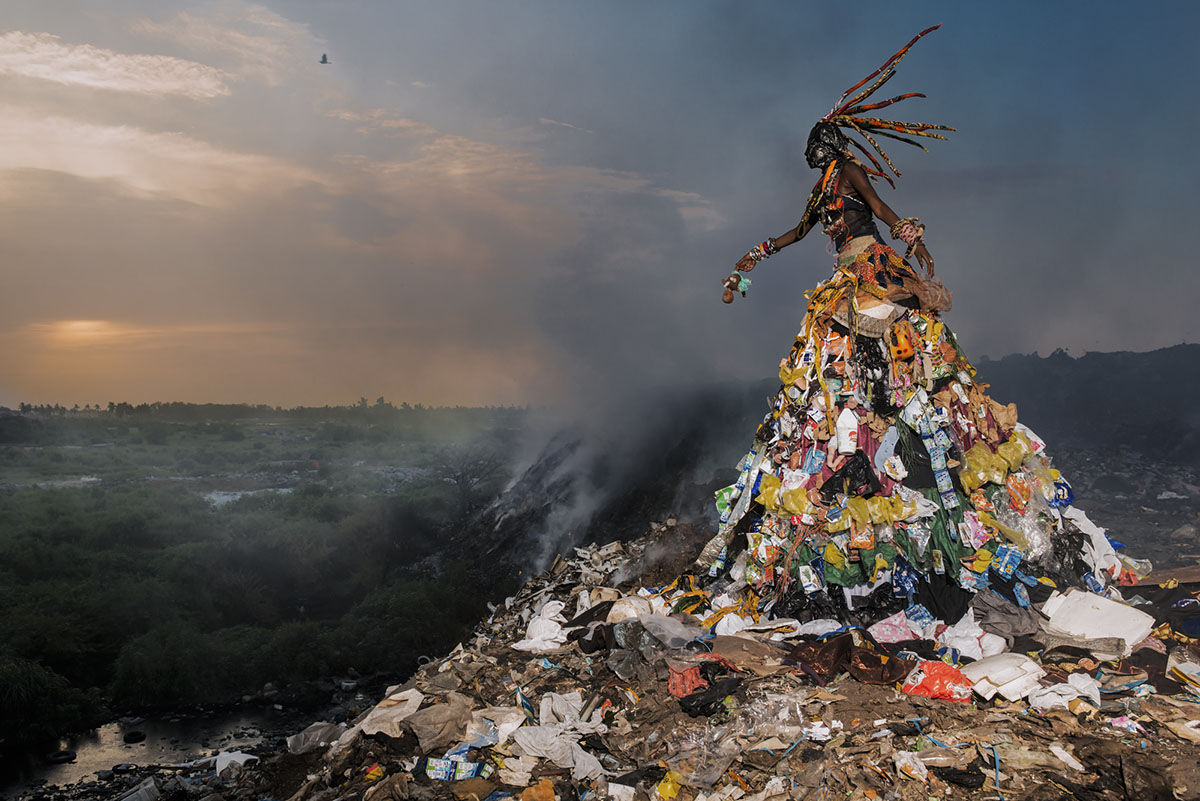
Fabrice Monteiro, The Prophecy. Baryt prints in color. ©FabriceMonteiro 2015. Courtesy of the artist and Chazen Museum of Art.
Partnering with Senegalese fashion designer Doulsy, Monteiro created a series of photographs starring a djinn (a supernatural spirit). Each djinn looms over a different environmental eyesore – emerging from a garbage heap, railing against a fire-ravaged forest, or anxiously viewing a rising sea. One spirit chokes on motor vehicle exhaust, another is drenched in oil from a listing ship, a third struggles to escape from a tangle of discarded fishing nets. Each sports a costume fashioned by Doulsy from objects found on site to resemble the surrounding environmental ruin.
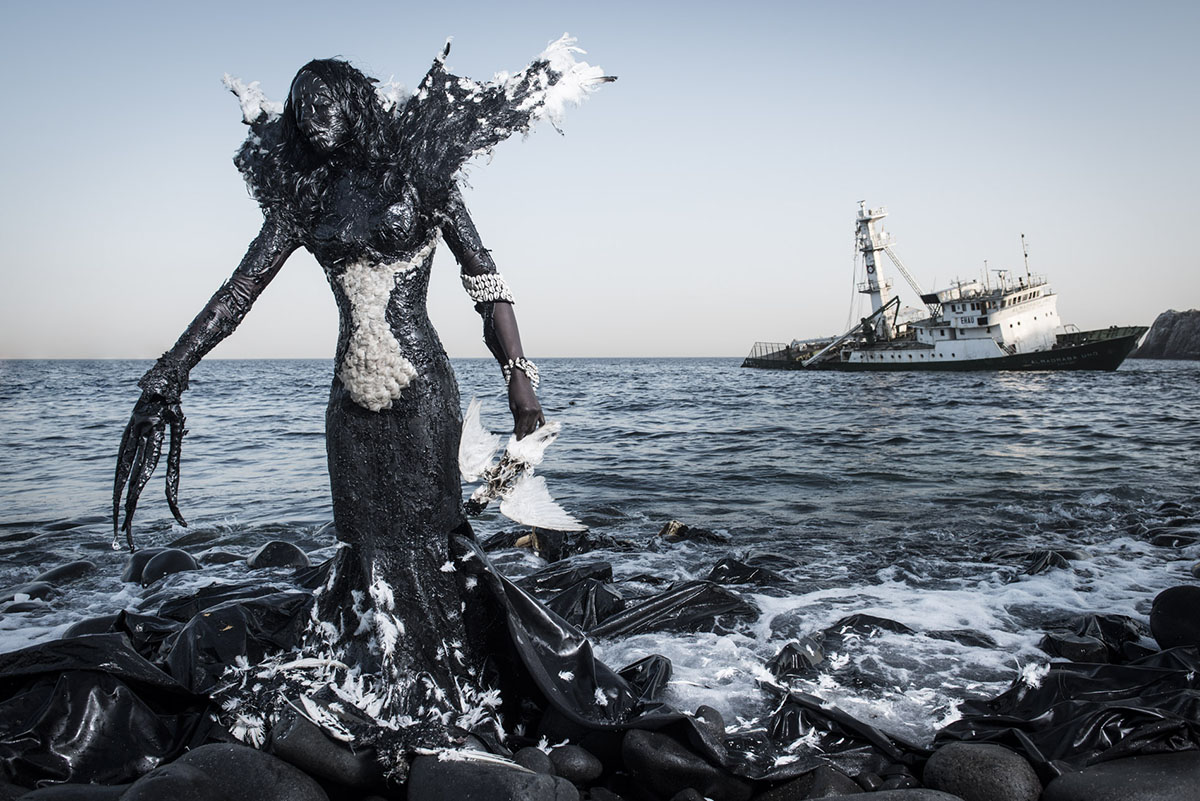
Fabrice Monteiro, The Prophecy #1. Baryt prints in color. ©FabriceMonteiro 2015. Courtesy of the artist and Chazen Museum of Art.
In dramatically striking poses, the djinns warn against the folly of environmental degradation, calling on local communities to take responsibility for resolving ecological crises. Encouraged by the enthusiastic response to his culturally grounded, empowering message, Monteiro began creating similar photographic scenes elsewhere. By extending The Prophecy project worldwide, Monteiro hopes to engage all cultures and continents in a global dialogue on environmental restoration.
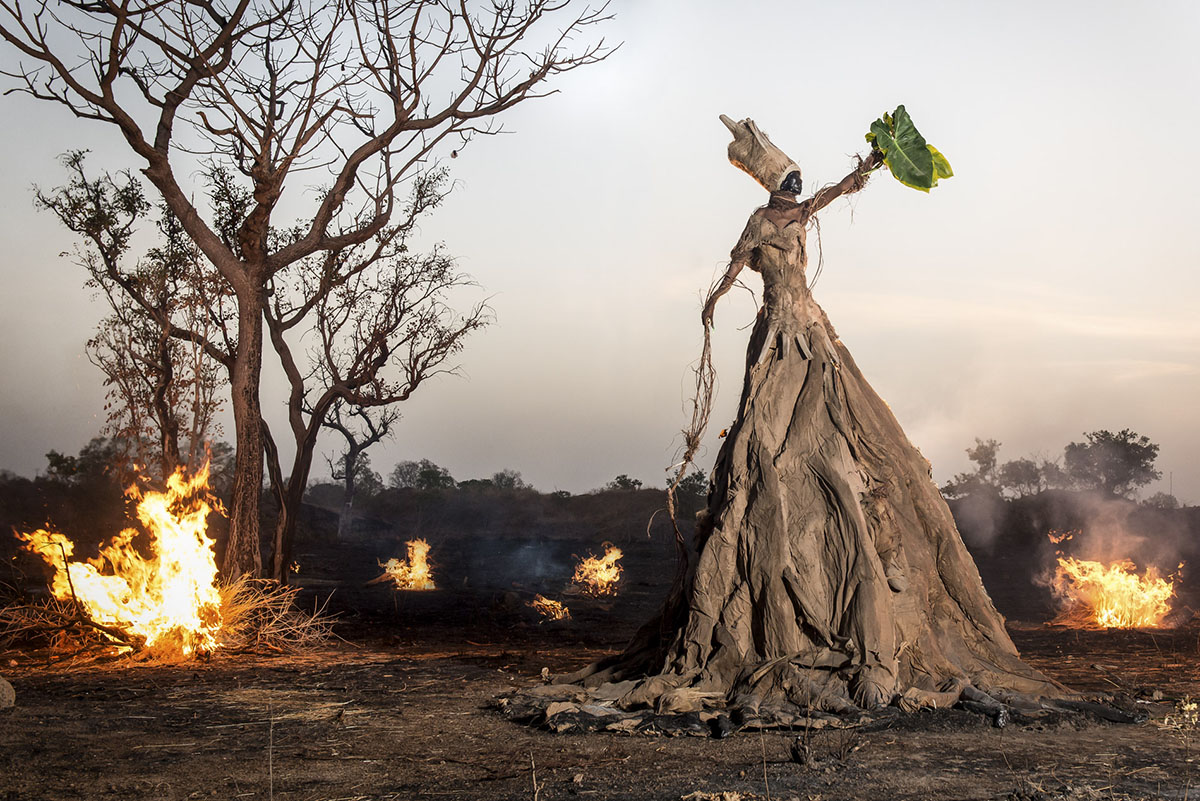
Fabrice Monteiro, The Prophecy #5. Baryt prints in color. ©FabriceMonteiro 2015. Courtesy of the artist and Chazen Museum of Art.
The Prophecy now includes 13 photographs, all of which are on display at the University of Wisconsin-Madison’s Chazen Museum of Art until January 5, 2020.
“Fabrice Monteiro’s photographs are both compelling and devastating,” observes Chazen Director Amy Gilman. “They confront the viewer with the very real results of climate change, pollution and depletion of natural resources, but they do so in a way that highlights the impacts of these forces outside our American borders. We are proud to share the entire series of photographs for the first time in the United States and look forward to helping other museums bring The Prophecy to their communities.”
Also on display at the Chazen Museum until January 5, 2020 is an exhibition of 60 contemporary artworks titled Plastic Entanglements: Ecology, Aesthetics, Materials. This collection explores the aesthetic, ethical and cultural implications of humanity’s reliance on ubiquitous plastics.
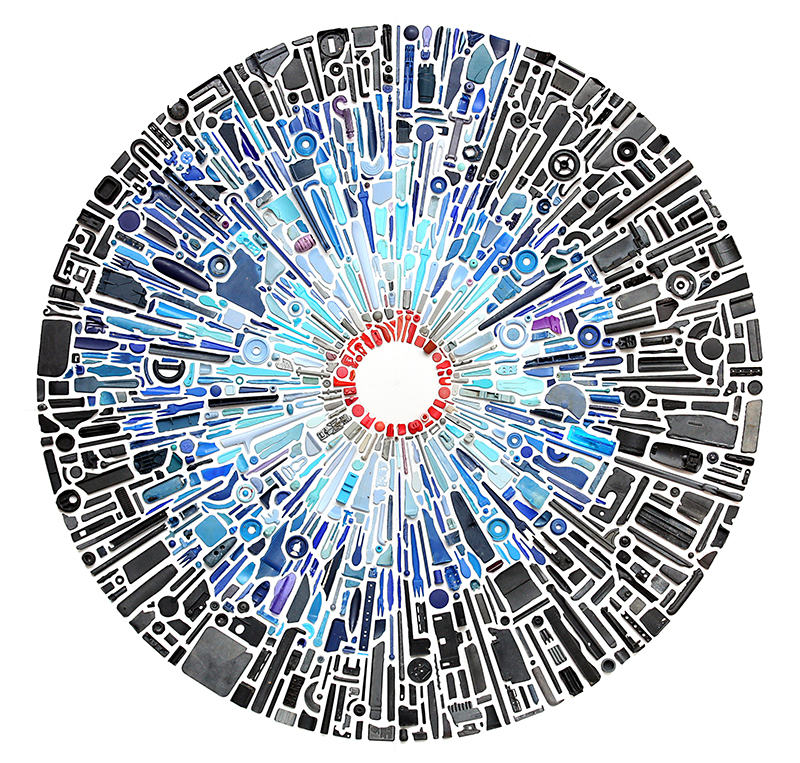
Steve McPherson, Wavelengths (2012–13). Unaltered marine plastic objects. ©Steve McPherson 2013. Courtesy of Victori + Mo Gallery and Chazen Museum of Art.
Co-curator Jennifer Wagner-Lawlor explains, “We hope the exhibition offers viewers a new perspective—more than one, actually—on a material so common that we don’t think about where it comes from, how we use it, how it is impacting the environment, local and global ecologies, and even our own health. The exhibition explores different sides of our lives with plastic, balancing the ecological concerns many artists bring to their work, with their simultaneous appreciation of the versatile material properties of plastic.”

